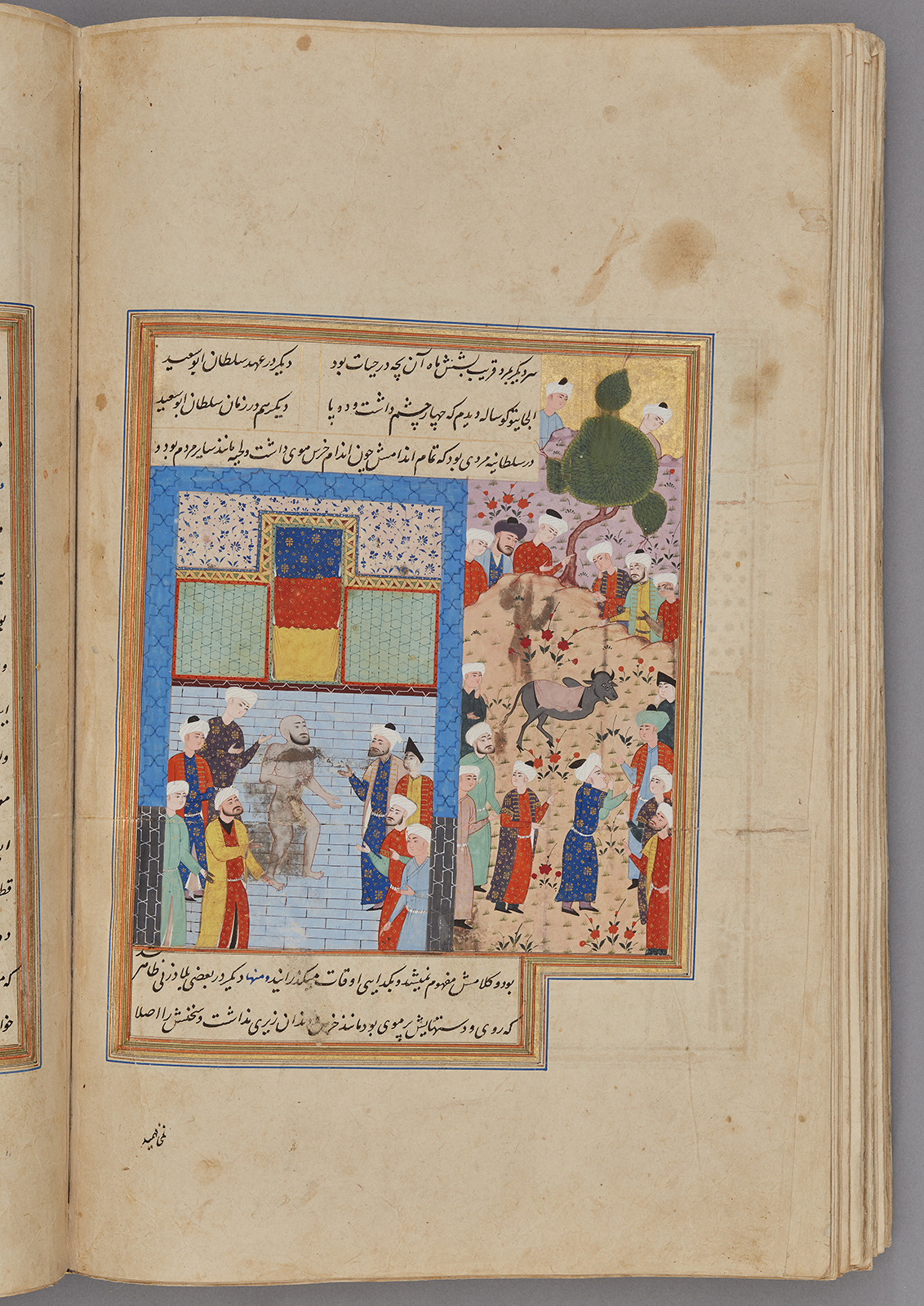Click on the image to zoom
Courtiers marvel at a grey man and a two-legged bull, Folio from a manuscript of Nigaristan
- Accession Number:AKM272.f234v
- Creator:Author: Ahmad b. Muhammad Ghaffari, Persian, died 1567 Scribe: Ahmad al-Shirazi
- Place:Iran, Shiraz (probably)
- Dimensions:38.7 cm × 25 cm × 6.4 cm
- Date:1573-74 CE/980 AH/AH 980
- Materials and Technique:Ink, opaque watercolour, and gold on paper
The miniature painting "Courtiers marvel at a grey man and a two-legged bull" is from an intact manuscript of Kitab-i Nigaristan, a collection of anecdotes and historical incidents written in prose by the historian and scholar Ahmad Muhammad Ghaffari (1504–1567/68) of Kashan in 1551–2. This illustrated manuscript, dated 1573, was probably produced in a Shiraz workshop.
See AKM272 for more information about the manuscript and links to the other illustrations.
Further Reading
A building and a landscape comprise the two sides of this miniature painting. The building is framed by a kind of frieze, which could also be interpreted as a portal or iwan. Inside a room stands a bald, bearded man with greyish skin. He is surrounded by a group of figures who gaze at him; he seems to be an object of wonder. Outdoors, in the middle of a steppe landscape, stands a grey cow with four eyes and two legs. Onlookers also surround this creature, staring in amazement.
Similar to other illustrations in the Nigaristan, this image depicts both the interior of a room and a perspective outside that room. However, in this case, the second perspective is a landscape rather than the façade of the room.
The narrative genre of the nadira, meaning peculiarity, includes anecdotes about oddities and miracles that refer to a historical or literary source and are narrated in a historical context. These strange events and miracles occur to rulers, scholars, viziers, and ordinary people in Iranian history from the introduction of Islam to the time of the Safavids (1501–1722). They often contain a moral lesson.
- Elika Palenzona-Djalili
References
Eleanor Sims. Peerless Images: Persian Painting and Its Sources. New Haven and London: Yale University Press, 2002. ISBN: 9780300090383
Note: This online resource is reviewed and updated on an ongoing basis. We are committed to improving this information and will revise and update knowledge about this object as it becomes available.


